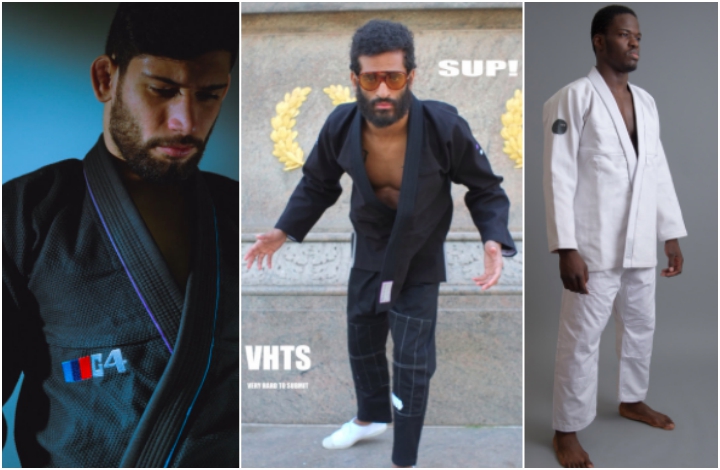So you want to buy your first Gi? It’s the first serious decision after you start training Bjj. When I started training there was only a submission wrestling class in my town. Then I moved to a bigger city where the classes were given in the gi. So I went to the local store with sporting goods and bought my first judoga for not much over 20$… it was one of the worst decisions. Nowadays we have online stores that have so much different gear, that it’s hard to pick just one kimono. In this article I will try to show you what have in mind while purchasing your first dream gi.
Set the budget
At the beginning you need to know what your kimono will be for. Do you want to have a long lasting one, or maybe you want to have a fancy new gi with cool patches that everybody will envy in the gym, anyway you have to set a budget. You have to count the cost of the gi, the shipping and the cost of the belt. I will describe the difference between choosing a gi for training and for competition.
If you want to train and go to tournaments in your new gi the first thing is to choose the right color. Ibjjf tournaments have specific rules for the color of the kimono you can start in. There are only three admissible colors: white, blue and black. The next thing are the patches on your gi, you can’t have them in any place you want, so you have to check if they are sutured in the right places. Also if you want to place your academy patch, you will have to do it in the right spot. The last thing is the size, the gi can’t be too small because you can get disqualified but we will get to that in a later chapter. If you want to know very precisely, you can always check out IBJJF Guide.
Buying a gi to compete is one thing, but you can also purchase one just for training. The color options gets really wide, from blood-red to blue camo (to hide in a blue forest). There are hundreds different looking kimonos with signature graphics from bjj-environment artists. But what you have to know about the colours is they get washed up a little bit after many training sessions, and washes.
The weave? What does it mean.
Everyone will have probably the same problem in choosing among the weave kinds. There are four main weave types but the brands usually call them differently so I will try to make it clear.
Single weave – the most common, is the combination between light weight, good durability and a fair price.
Double weave – a durable gi, that will last for hours of tough trainings and competition. If you’ll face a guy with such kimono don’t use spider guard on him, cause your hands will be sore for a couple of days.
Gold weave – very similar to double weave. It is hard to grip, but with a little weight advantage, because they are a bit lighter.
Pearl weave – is the best choice between light weight and durability. That’s why many companies decide to use it their products
A lot of people put high importance in the trousers. The durability is the most important thing. Most pants are made out of cotton, but some are made out of light ripstop material, which is nice during hot summer days.
Knowing your size
The size chart of gi is a little bit different than the normal size chart. There’s no S amount, so people who haven’t trained bjj might get a bit confused. I’ll try to make it clear so everybody can get their perfect kimono. I will use myself as an example. I’m 6 ft 3 inches tall, and weigh around 200 lbs. That makes me a little bit undersized because by my weight I’m in the A3 size, but my height I’m in the A4 chart. So the gi I might buy might too broad on me, and too short. But the producers came up with a really great idea, they made mid-sizes for people that don’t fit in regular sizes. Those sizes are:(I used A1 as an example)
A1L – if you are a bit lighter but have longer limbs
A1H – if you are a bit stockier a the gi could be too long for them
A1F – this kind of gi is made to fit more, and be less loose on the person wearing it
Choosing the best size for you is a really important part due to competition, because if your gi will be too tight you might get disqualified, while when your kimono will be too loose you can get easily caught by your gi, and you don’t want it.
When you buy your dream gi and it will arrive, don’t get frustrated when it will be a little bit too big. The kimono has it in common that it shrinks during the first wash like 10%. Some gi’s are advertised as pre-shrunk, but every gi that I had shrunk less or more. Most of the companies warn against tumble dryers because it can wrap-up and melt the rubber-side collar.
The soul of the Gi- the belt.
After choosing your first gi, you’ll have to buy yourself a belt, while some companies give the white belt with some kimonos other brands sell them for a quite big amount of money. The most important thing about the belt is that it has to be really… thick, but you will get to know all of that in a couple of days. When you will get your ideal gi, you should start rolling because time’s running, and you don’t want to be a white belt forever.




















